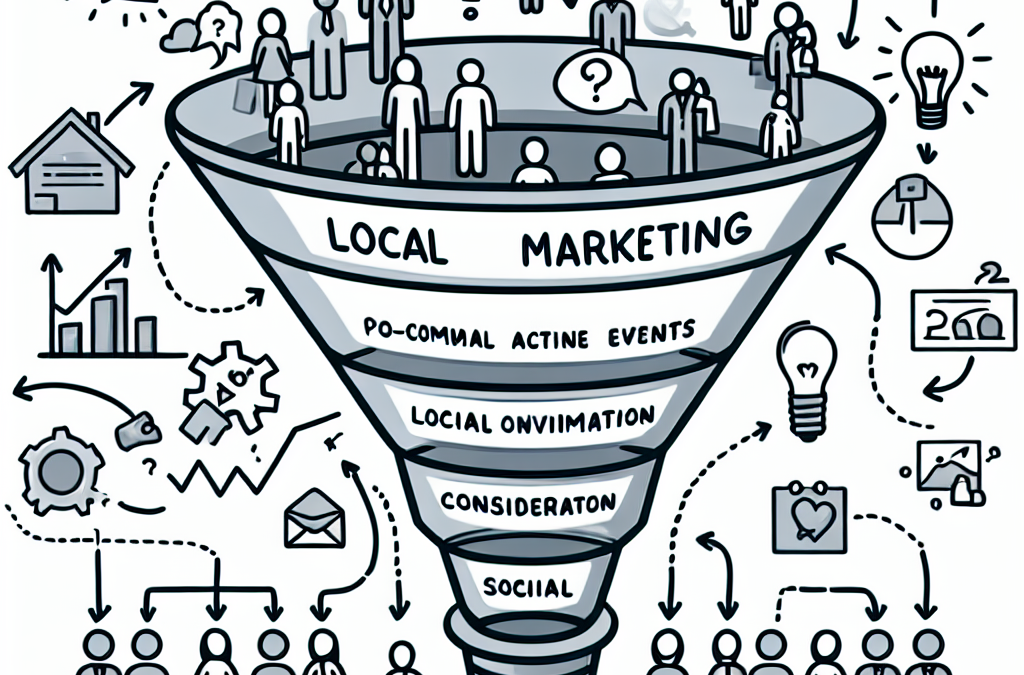Understanding Your Local Audience
Identifying Your Target Market
When I first dived into local marketing, I realized that knowing who you’re talking to is absolutely key. It’s like trying to throw a party; if you don’t know who your guests are, how can you tailor the experience? I recommend taking the time to do some research and identify your target demographic. Are they young families? College students? Business professionals? Each group has different needs and preferences.
Engaging with your community through surveys or social media can give you invaluable insights. Just ask questions like, “What do you want to see more of?” or “What challenges do you face when shopping locally?” This info can significantly shape your marketing efforts.
Lastly, don’t forget to keep track of evolving trends in consumer behavior. Over time, your audience’s preferences might shift, so staying updated can keep your marketing tactics fresh and effective.
Creating Local Buyer Personas
Once you have a good grasp on your audience, it’s time to break it down into buyer personas. This is basically creating semi-fictional characters that represent your ideal customers. Each persona should include demographics, interests, purchasing habits, and pain points.
Why is this important? Well, when you’re crafting your marketing messages or designing your services, having these personas in mind helps ensure you’re speaking directly to your audience’s needs. For instance, if one of your personas is a busy parent, you’d want to emphasize convenience and time-saving benefits in your marketing.
Regularly revisiting these personas can also help refine your strategy. As I’ve learned over the years, things change, and so can your buyers’ motivations. Keep it fluid and make necessary adjustments to stay relatable!
Analyzing Competitors
Diving into a local marketing funnel isn’t just about you; it’s also about understanding who else is swimming in your pond. Analyzing competitors can provide you with essential insight into what’s working for them and what isn’t. Use their strengths and weaknesses to inform your own strategy.
I like to create a SWOT analysis (Strengths, Weaknesses, Opportunities, Threats) for my top competitors. This helps pinpoint areas where I can step in and fill a gap. You might discover they’re missing a key service or that their online presence is lacking, which creates an opportunity for you.
Remember, learning from your competition doesn’t mean copying them. It’s about understanding the landscape so you can strategically position your brand where it’s most effective for local consumers.
Developing a Local Marketing Strategy
Choosing the Right Marketing Channels
Moving on to strategy! A local marketing funnel isn’t one-size-fits-all. You need to choose channels that resonate with your specific audience. Some people in your community might be hanging out on Facebook, while others are more inclined towards Instagram or TikTok.
I’ve learned that mixing traditional and digital strategies often yields the best results. So, don’t be shy about exploring avenues like local radio spots, flyers, or community events alongside your social media campaigns. You’ll want to cast a wide net.
Also, consider how you can leverage local influencers or community figures for enhanced visibility. Their endorsement can go a long way in building trust with local audiences.
Creating Engaging Content
Now, onto content creation. In my experience, it’s not just about pushing a sale; it’s about telling a story and engaging with your audience. Blogging, videos, social media posts – these can all be effective tools to share your brand’s personality and connect with consumers on a personal level.
When creating content, think about what questions your audience might have and position yourself as the authority. For example, if you run a local bakery, share recipes, baking tips, or behind-the-scenes looks at your day-to-day operations. This kind of content builds community and fosters loyalty.
Don’t forget to encourage user-generated content, too! Customers love to share their experiences, so prompt them to post photos of your products in use or share their favorite items. This can amplify your reach exponentially.
Measuring Your Marketing Efforts
The final, yet super crucial, part of your strategy is measuring your success. You can’t improve what you don’t track! I rely on tools like Google Analytics and social media insights to see what’s working and what’s not.
Set clear goals – whether that’s increasing foot traffic, growing your online following, or boosting sales. By establishing KPIs (Key Performance Indicators), you can better understand the effectiveness of each campaign and adjust accordingly.
And remember, success isn’t always about the numbers. Sometimes it’s about the relationships you build and the community you foster. Take time to reflect on qualitative metrics and feedback too. Those insights are gold!
Executing Your Local Campaigns
Launching Your Campaigns
Now that you have your strategy in place, it’s time to roll it out! I often find it helps to create a content calendar to stay organized and keep track of what needs to go out when. This way, you’ll ensure a consistent presence across your channels.
Consider launching with a bang. Maybe offer a grand opening discount, host a local event, or throw in a community initiative that gets people talking. Excitement can be contagious, and you want to capture that energy!
And don’t underestimate the power of follow-up. After a campaign wraps up, engaging with those who participated can help cement those relationships and create loyalty. A simple heartfelt thank you can go a long way!
Building a Community Hub
Cultivating a community hub around your brand is essential for sustaining a local presence. Engage actively with your customers on social media, respond to comments, and even consider creating a local club or newsletter. This helps create a sense of belonging.
Being available for your customers, whether online or in-person, reinforces trust and keeps your brand at the forefront of their minds. If they feel connected to you, they’re more likely to choose your business over others.
Hosting regular events or workshops can also help solidify your position as a community leader. People love to gather and learn from each other, and positioning yourself as a facilitator enhances your local profile.
Feedback and Adjustment
After executing your campaigns, gathering feedback is vital. Ask your customers for their thoughts on your offerings and their overall experience. This will not only provide you with improvements but also shows your customers that their opinions matter.
Use surveys, reviews, or social media polls to accumulate insights. Analyzing this data can lead to meaningful adjustments that benefit both you and your customers. Adapting to their needs means you’re always evolving!
Lastly, don’t shy away from sharing your learnings with your community. Transparency builds trust, and showing that you’re willing to listen and improve could endear you even more to your local audience.
Optimizing for the Future
Staying Current with Marketing Trends
The marketing world is always changing. What works today might not work tomorrow, and that’s why I prioritize staying up-to-date with new tools and strategies. Subscribe to marketing newsletters, participate in webinars, and follow industry leaders on social media.
Finding local meetups or networking events can also open your eyes to new trends. The more we learn from each other, the better we get at serving our audiences!
Listening to podcasts about marketing or reading relevant books can also give you fresh ideas. Always approach your learning with an open mind – the next breakthrough in your strategy could be right around the corner!
Incorporating Feedback into Your Future Plans
As I mentioned earlier, feedback is crucial. Don’t just stop after hearing it once; continually incorporate this into your plans. Create a systematic approach for gathering and assessing feedback so that it becomes part of your marketing DNA.
Over the years, I’ve kept a quick feedback loop, allowing me to make real-time adjustments. If a campaign isn’t hitting the mark, I need to know why and tweak my approach immediately.
Staying flexible ensures you’re not just another face in the crowd but remain a responsive and attentive local business that truly values its customers’ input.
Continuous Learning and Adapting
Finally, never stop learning. As I mentioned, marketing techniques evolve, and consumer behavior changes. Educating yourself and your staff continuously can empower your team, leading to innovative ideas that keep you ahead of the game.
I’ve found that encouraging team members to explore their interests leads to fresh perspectives that might not typically be part of your marketing strategy. Everyone has a unique take on things; harness that creativity!
With every new initiative I undertake, I strive to learn from both my successes and failures. So remember, optimizing for the future isn’t just about working in the now, but also paving the way for future endeavors.
Frequently Asked Questions
What is a local marketing funnel?
A local marketing funnel refers to the targeted process of attracting and converting local customers through a series of carefully planned marketing steps designed for local branding and outreach.
Why is understanding my audience so important?
Understanding your audience allows you to tailor your marketing strategies to meet their specific needs, ultimately improving engagement and sales.
What channels are best for local marketing?
The best channels vary by community but typically include social media platforms, local community boards, Google My Business, email newsletters, and direct mail campaigns.
How do I know if my marketing efforts are successful?
Success can be measured through key performance indicators (KPIs) such as website traffic, engagement rates, sales conversions, and customer feedback.
Can I modify my marketing funnel over time?
Absolutely! As your audience’s behavior changes, you should continuously test and tweak your marketing strategies to ensure they remain effective and relevant.


